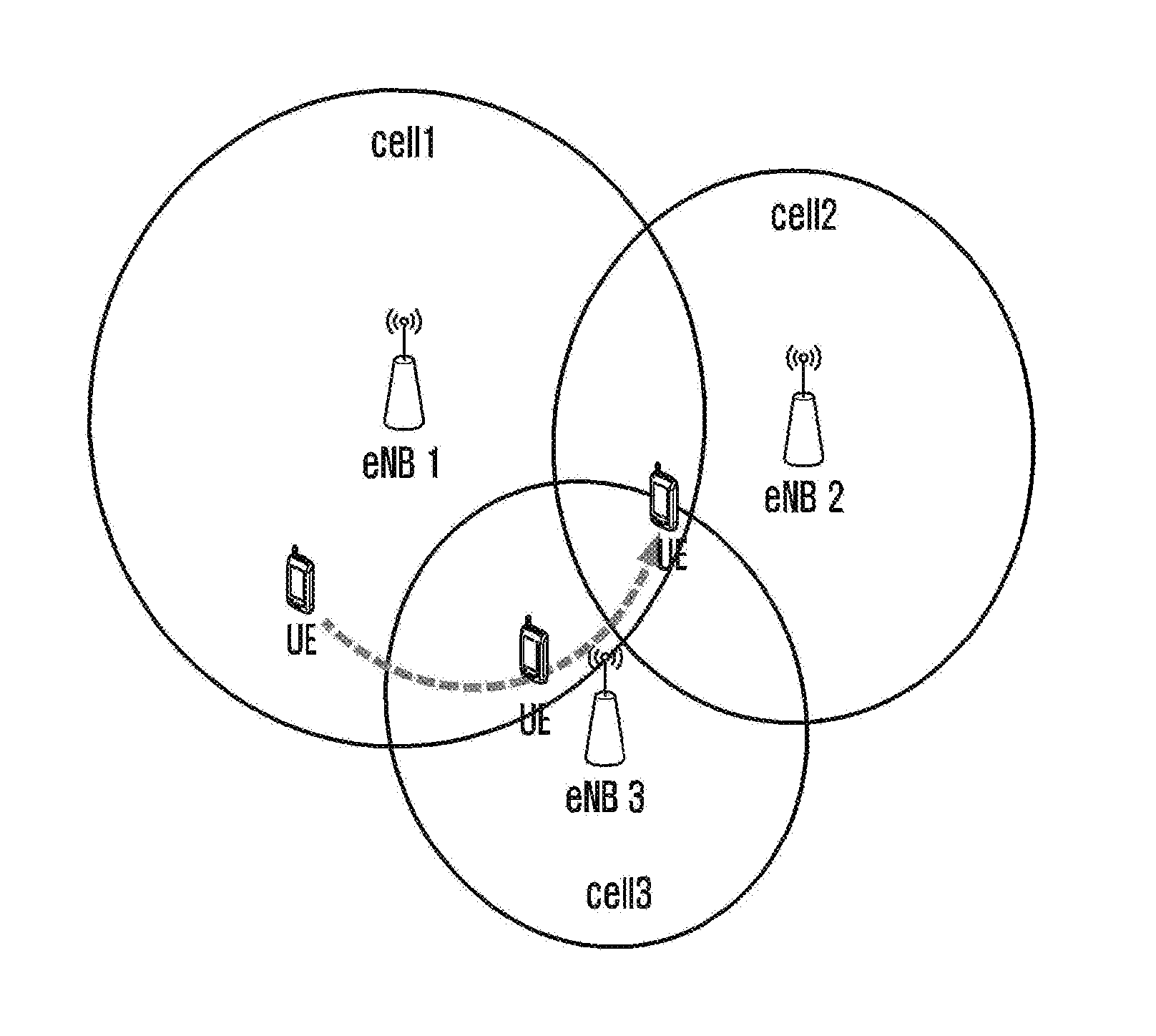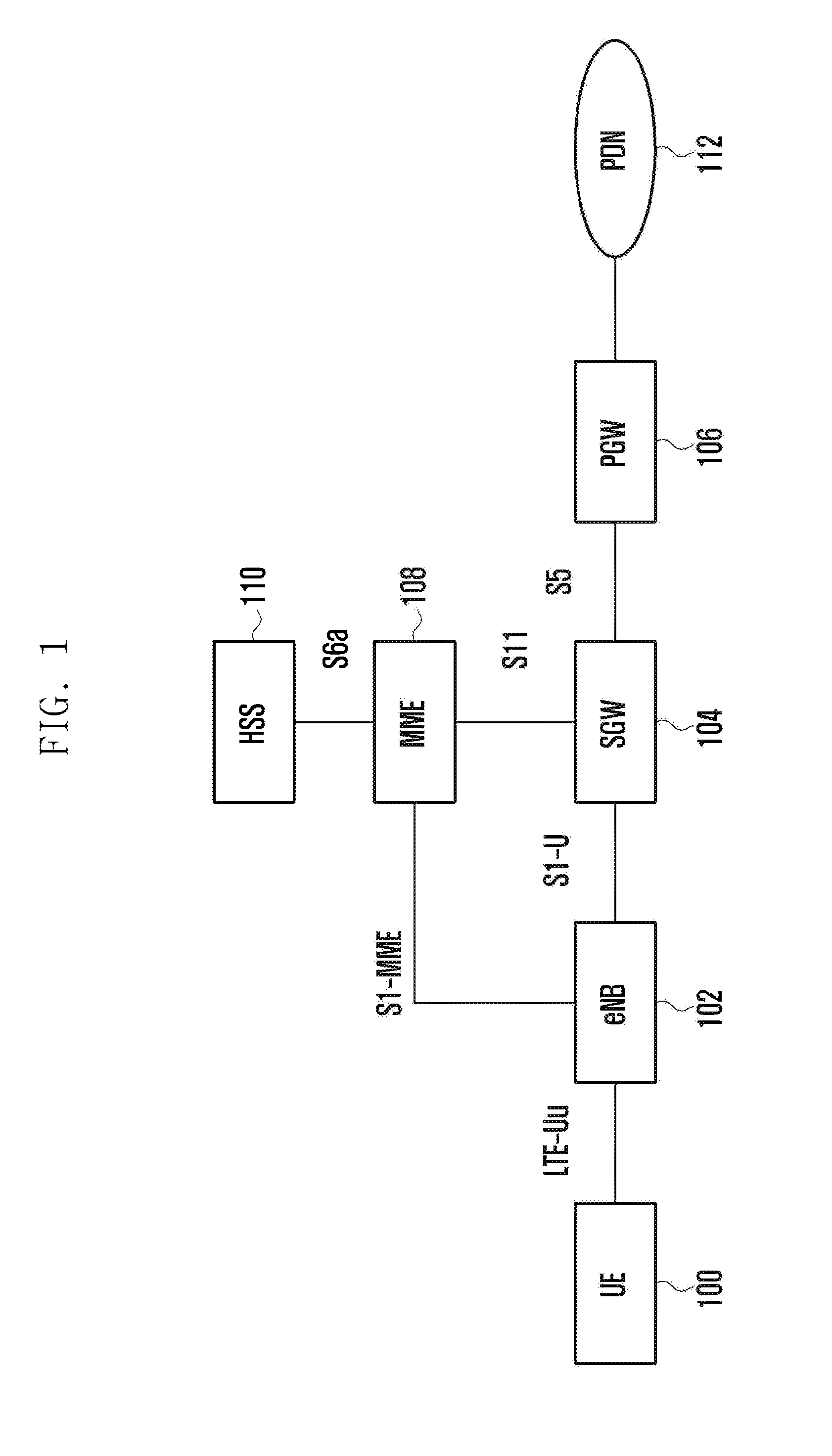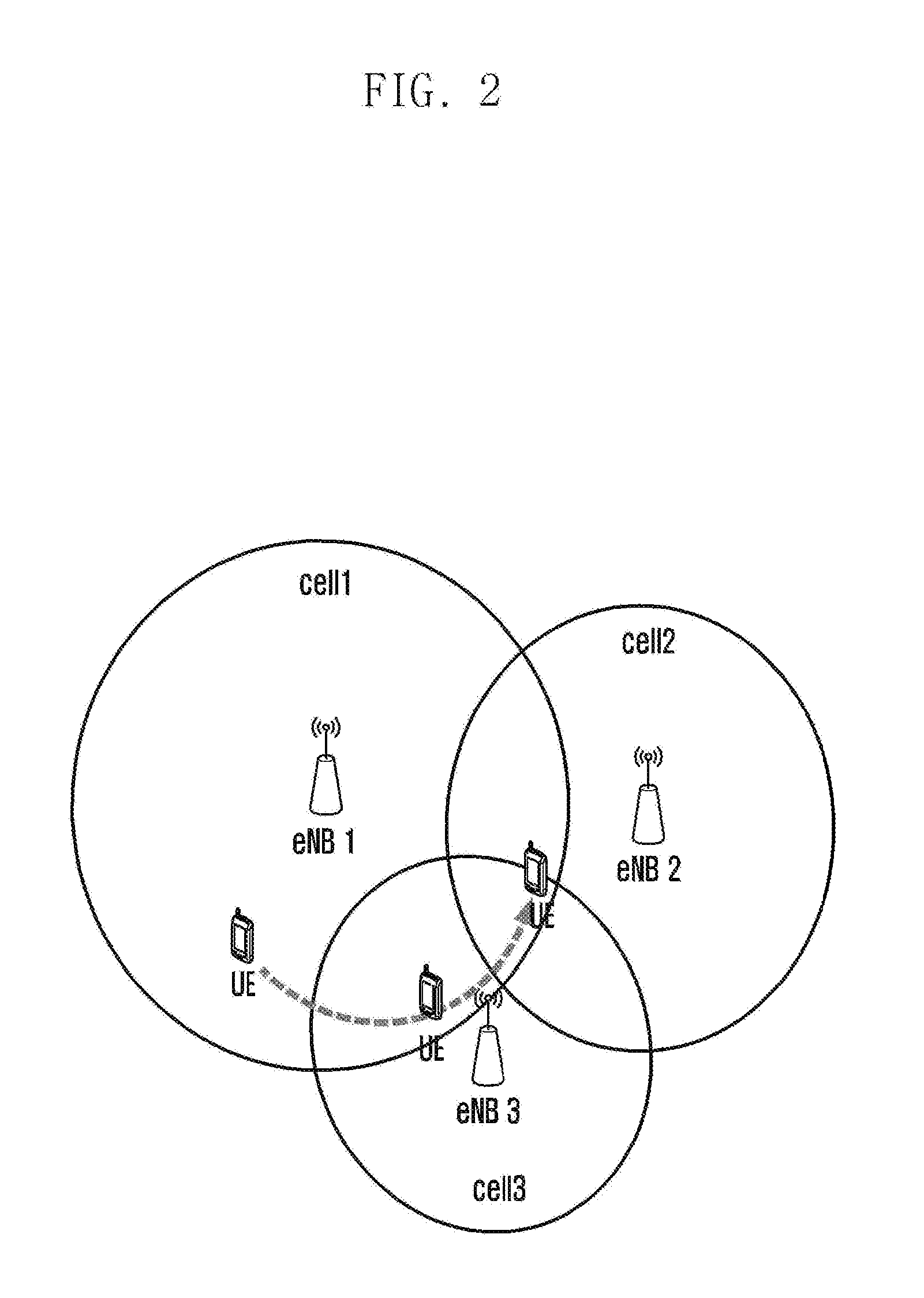Method and device for controlling handover of user equipment in long connected mode in wireless communication system
- Summary
- Abstract
- Description
- Claims
- Application Information
AI Technical Summary
Benefits of technology
Problems solved by technology
Method used
Image
Examples
first embodiment
[0032]Method for minimizing the number of handovers of the UE in such a way that the network adjusts the measurement configuration of the UE differently of the legacy mode or configures the measurement report sent by the UE differently of the legacy connected mode processing condition
[0033]According to the first embodiment, the eNB may manage the measurement configuration value of the UE in the long connected mode separately. In more detail, the eNB may send a separate channel measurement configuration to the UE in the long connected mode through the RRC Connection Reconfiguration (RRCConnectionReconfiguration) message in the Attach or Service Request procedure.
[0034]For example, it is possible to extend the measurement report interval of the UE or decreases the threshold value of the measurement report of the UE as compared to the legacy connected mode. Such a value may be a new variable value or legacy variable value modified in the MeasConfig IE of the RRCConnectionReconfiguratio...
second embodiment
[0044]Method for the network to transition the UE operation mode to the idle mode when the UE handover decision is made
[0045]The second embodiment proposes a method of transitioning the UE operation mode to the idle mode in the situation where the UE in the long connected mode which has no ongoing data is handed over.
[0046]The eNB analyzes the measurement report sent by the UE in the long connected mode. If the measurement result fulfils the condition of triggering handover of the UE, the eNB transmits the UE operation state to the idle mode by triggering the S1 release procedure other than making any handover decision for the UE. The handover condition may correspond to the configuration for the UE in the long connected mode as described in section 1).
[0047]FIG. 3 is a diagram illustrating a handover situation of the UE according to another embodiment of the present invention.
[0048]In the case of moving on the path as shown in the drawing, the UE in the normal connected mode is han...
third embodiment
[0053]Light handover method for handover of the least context without data forwarding process in the middle of handover procedure
[0054]According to the third embodiment, when the UE in the long connected mode performs handover in the situation without ongoing data, the network operates without data forwarding process during the legacy handover procedure. In this way, it is possible to reduce handover signaling overhead.
[0055]FIG. 4 shows a S1 handover procedure of the UE in the normal connected mode. Briefly, the eNB makes a handover decision for the UE and notifies the source MME of this, and the source MME sends the target MME a request for data forwarding. The source and target MMEs perform data forwarding in cooperation with the source and target SGWs. This means that the data forwarding occupies large part of the handover procedure.
[0056]FIG. 5 is a signal flow diagram illustrating S1 handover of the UE according to an embodiment of the present invention.
[0057]1. The source eNB...
PUM
 Login to View More
Login to View More Abstract
Description
Claims
Application Information
 Login to View More
Login to View More - R&D
- Intellectual Property
- Life Sciences
- Materials
- Tech Scout
- Unparalleled Data Quality
- Higher Quality Content
- 60% Fewer Hallucinations
Browse by: Latest US Patents, China's latest patents, Technical Efficacy Thesaurus, Application Domain, Technology Topic, Popular Technical Reports.
© 2025 PatSnap. All rights reserved.Legal|Privacy policy|Modern Slavery Act Transparency Statement|Sitemap|About US| Contact US: help@patsnap.com



